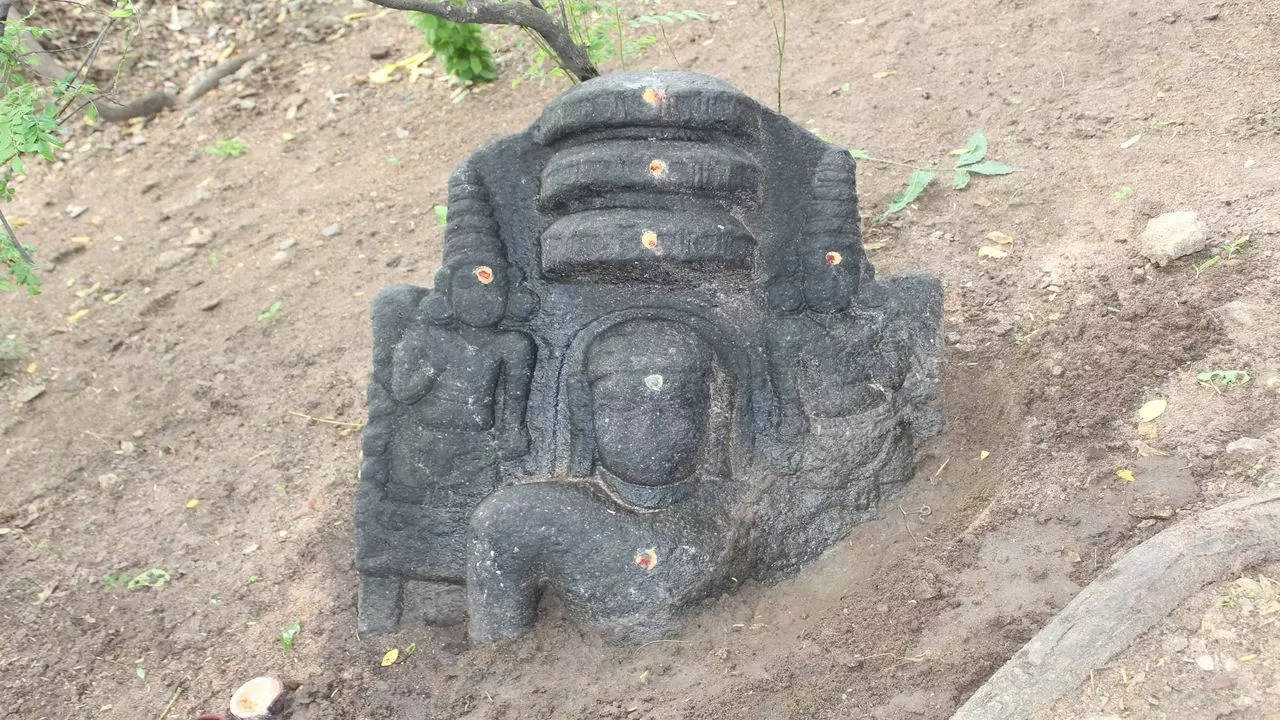CHENNAI: A 1,000-year-old stone statue of Thirthangara Mahavir was found at Manavarayanendal near Thiruchuli in Virudhunagar district.
V Rajaguru, president of Ramanathapuram Archaeological Research Foundation, said the statue had been found during a field visit by S Rajapandi, assistant professor of history, SBK College, Aruppukkottai, and M Sarath Ram, a student in the Tamil Nadu state archaeological department.
He said traces of Jainism had been found in many parts of Virudhunagar district, including Kovilankulam, Thoppalakarai, Kurandi, Irunjirai, Pullur, Palavanatham, Pandalkudi, Paraikulam, Thiruchuli, Puliyuran, Aviyur, Iruppaikudi, Kulasekaranallur, Seithur and others.
The sculpture found in Manavarayanendal, which was half buried in the soil, was intricately carved and made of granite. There is a triple umbrella above the head of the statue, which has creepers carved on it. It is flanked by sculptures of yakshas.
Based on the sculpture technique, it is assumed that the statue might belong to the 11th century AD.
The fact that many Tirthankara sculptures and black and red potsherds belonging to the iron age have also been found in this region might be an indication that the region had been inhabited from the iron age, he said.
V Rajaguru, president of Ramanathapuram Archaeological Research Foundation, said the statue had been found during a field visit by S Rajapandi, assistant professor of history, SBK College, Aruppukkottai, and M Sarath Ram, a student in the Tamil Nadu state archaeological department.
He said traces of Jainism had been found in many parts of Virudhunagar district, including Kovilankulam, Thoppalakarai, Kurandi, Irunjirai, Pullur, Palavanatham, Pandalkudi, Paraikulam, Thiruchuli, Puliyuran, Aviyur, Iruppaikudi, Kulasekaranallur, Seithur and others.
The sculpture found in Manavarayanendal, which was half buried in the soil, was intricately carved and made of granite. There is a triple umbrella above the head of the statue, which has creepers carved on it. It is flanked by sculptures of yakshas.
Based on the sculpture technique, it is assumed that the statue might belong to the 11th century AD.
The fact that many Tirthankara sculptures and black and red potsherds belonging to the iron age have also been found in this region might be an indication that the region had been inhabited from the iron age, he said.
